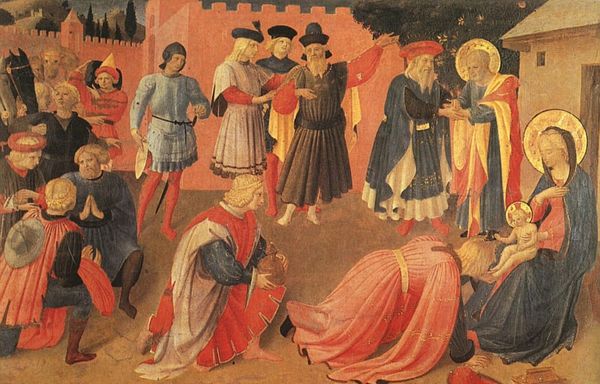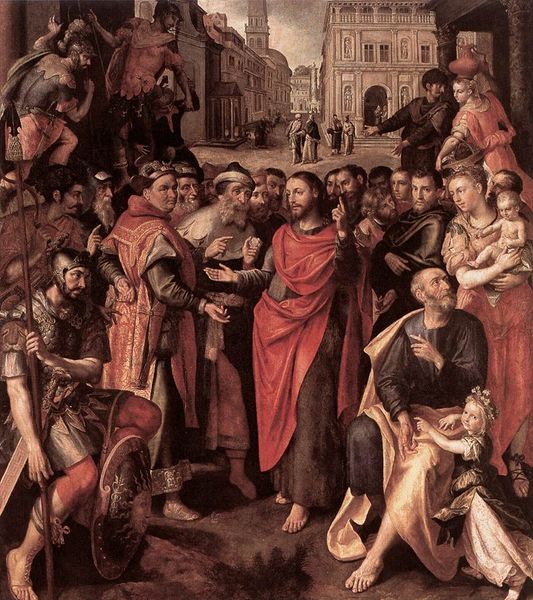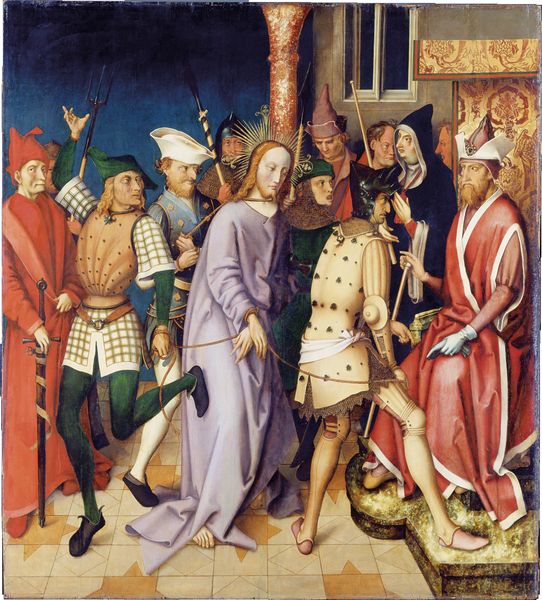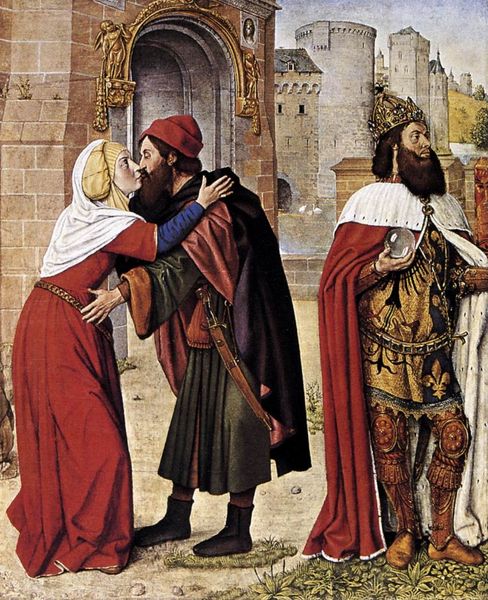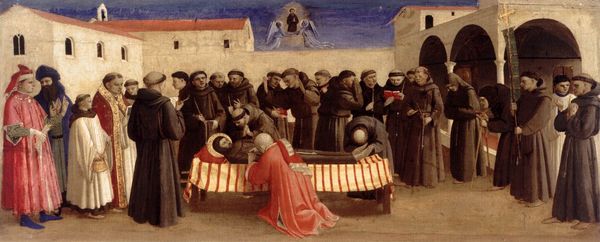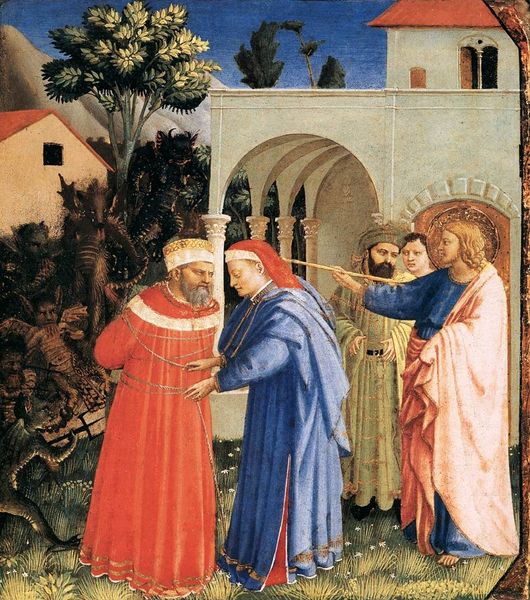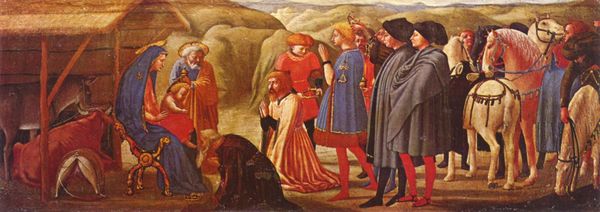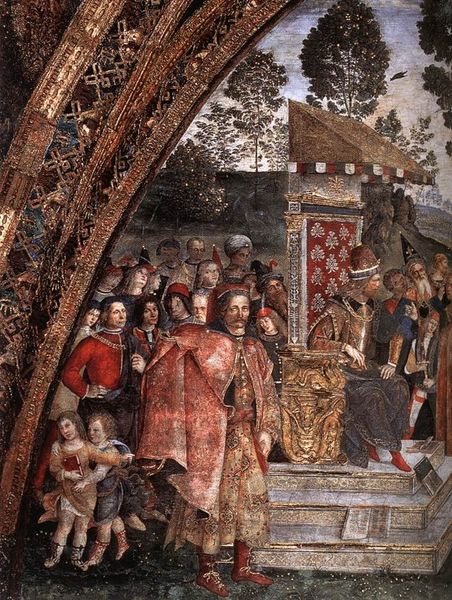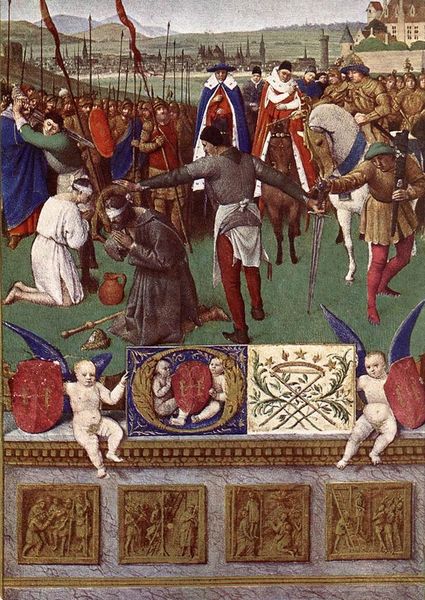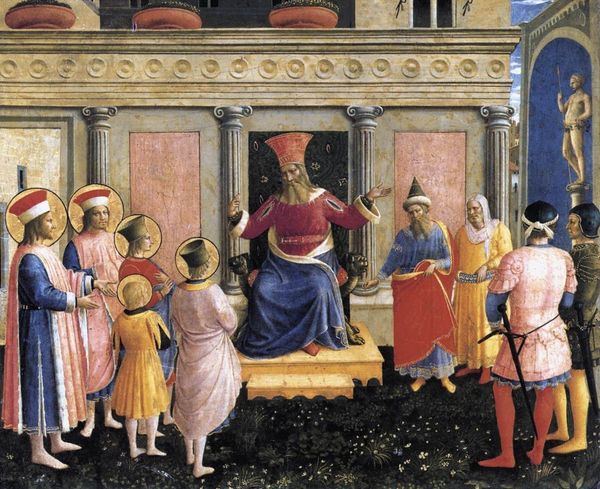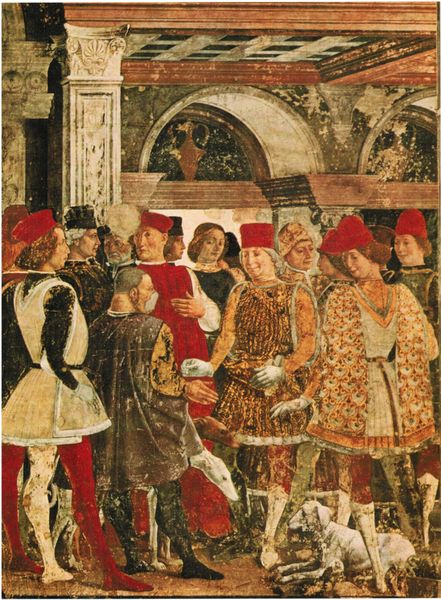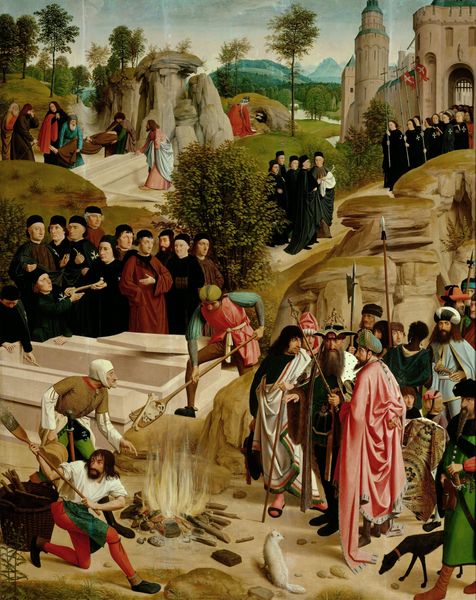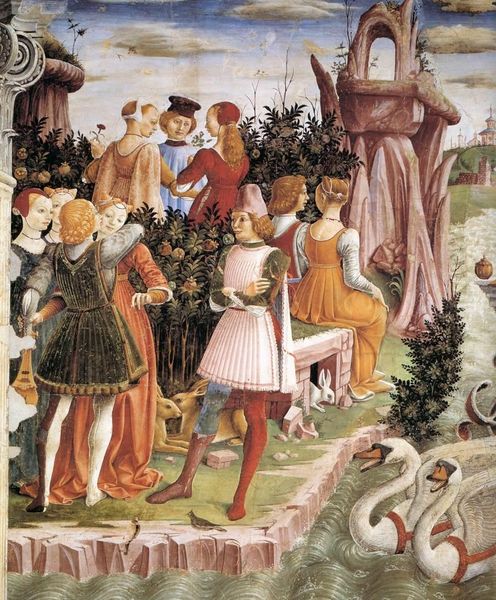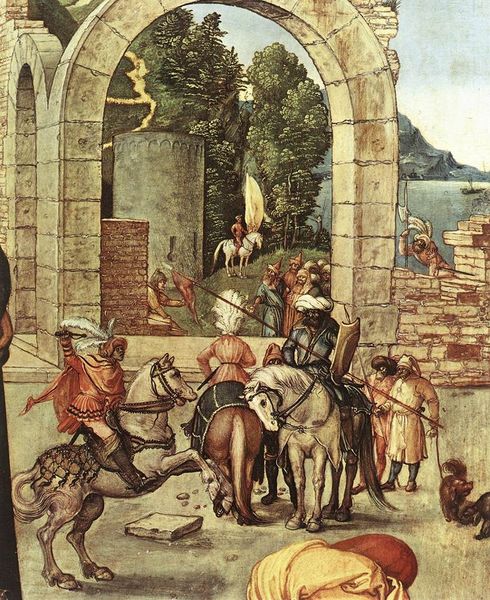
#
gouache
#
painted
#
possibly oil pastel
#
oil painting
#
acrylic on canvas
#
coloured pencil
#
underpainting
#
christianity
#
men
#
mythology
#
painting painterly
#
mixed media
#
watercolor
#
christ
Copyright: Public domain
Editor: Here we have Dirk Bouts' "The Meeting of Abraham and Melchizedek," created around 1465. The figures are really striking, and the details are so precise. What really jumps out at me is how stiff the poses of the figures appear. What do you make of this piece? Curator: Well, let's think about the materials. Bouts, and others like him, were transitioning from tempera to oil paint. What impact would using oil, a new medium at the time, have had on artistic production, and, subsequently, the finished work? Editor: I see. Oil paints take longer to dry, which allows for more blending, right? Curator: Exactly. Think about the workshops of the period. They operated on a guild system and oil paint enabled collaborative work in new ways. It enabled highly detailed underpainting, followed by translucent glazes applied in layers by various guild members, each adding different levels of mastery. How does that impact how we value or think about artistic 'genius' then? Editor: That's a great point! So, rather than viewing Bouts as a singular genius, we should be looking at the broader network of artisans involved in producing this artwork and seeing it as the result of collective labour and resources. The detailed armor, the rich fabrics... they point to skilled craftsmanship within a specific economic context. Curator: Precisely. The availability of these expensive materials, like the pigments used, speaks volumes about the patrons, their wealth, and their access to global trade networks, which makes this painting a social document as much as a religious one. Do you see how material analysis can give us a more grounded reading of the art? Editor: Definitely! Thinking about the "how" and "what" of the painting process really sheds light on the cultural and economic systems in place at the time. I had never considered those economic structures. Curator: The artist relies on, benefits from, and maybe even challenges the norms of art-making at the time through their material and technique choices, so the question isn’t necessarily “what” it represents, but “how” did the prevailing circumstances shape what we see?
Comments
No comments
Be the first to comment and join the conversation on the ultimate creative platform.
